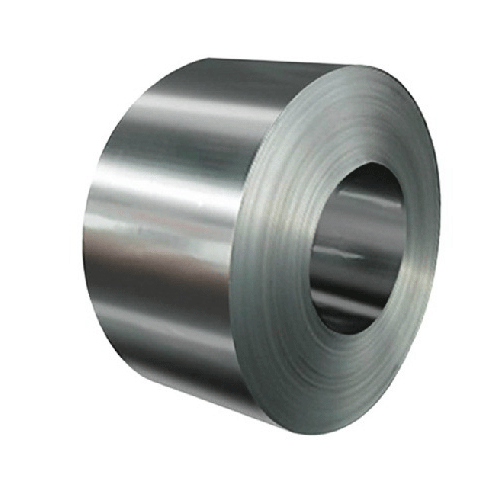
If you own a Mazda 3, you’ve likely come to appreciate its reliability and performance on the road. But just like any vehicle, it may require repairs over time, and one crucial component that often needs attention is the fuel pump.
Whether you’re experiencing issues with fuel delivery or simply planning for future maintenance, knowing about Mazda 3 Fuel Pump will empower your decision-making process. This guide will take you through everything you need to know—from recognizing when it’s time for a replacement to weighing the benefits of various options available today. Buckle up as we navigate this important aspect of your Mazda 3’s upkeep!
Understanding The Role Of The Fuel Pump In Your Mazda 3
The fuel pump is vital to your Mazda 3’s engine system. Its primary role is to deliver gasoline from the tank to the engine at the right pressure, ensuring that your vehicle runs smoothly and efficiently.
There are two main types of fuel pumps: mechanical and electric. Most modern Mazda 3 models use electric fuel pumps, which are more efficient and reliable than their mechanical counterparts. These pumps operate silently but are crucial in maintaining optimal engine performance.
A well-functioning fuel pump helps maintain proper fuel flow, ensuring the engine receives an adequate supply under various driving conditions. If it fails or operates poorly, you may notice symptoms like reduced power, stalling, or difficulty starting your car.
Additionally, placing the fuel pump inside or near the gas tank helps cool it down during operation. This cooling effect extends its lifespan while preventing overheating issues.
Understanding this component is importance can help you recognise when something might be wrong with your vehicle’s performance. Regular maintenance checks can keep everything running smoothly for years to come.
When Should You Replace Your Mazda 3 Fuel Sender?
A failing Mazda 3 Fuel Sender can lead to various driving issues. It’s crucial to recognise the signs indicating a replacement is necessary. If your Mazda 3 struggles to start or experiences long cranking times, this could be an early warning sign of fuel pump trouble.
Another notable symptom is sputtering during acceleration. If you feel your car hesitating or losing power while driving, it might indicate insufficient fuel delivery caused by a malfunctioning pump. Pay attention if the engine stutters when you push the gas pedal.
Strange noises from the fuel tank are also worth noting, particularly whining sounds that weren’t there before. This noise may indicate wear and tear on internal pump components. Ignoring these sounds could lead to more severe problems down the line.
Additionally, keep an eye on your fuel gauge readings. A faulty fuel pump can cause inaccurate readings, leading you to believe there’s more gas in your tank than there is—potentially leaving you stranded.
If you’ve noticed any leaks under your vehicle or around its components, it’s best to take your time with safety and performance; replacing the fuel pump should become a priority.
OEM Fuel Pumps: Pros and Cons
Quality is a significant advantage when considering OEM fuel pumps for your Mazda 3. These parts are made by the original manufacturer and designed to meet exact specifications. This means they often provide reliable performance and fit seamlessly within your vehicle.
Another benefit of OEM fuel pumps is warranty coverage. Most come with a manufacturer’s warranty, ensuring peace of mind in case of defects or premature failures. This assurance can be particularly comforting when investing in essential components like fuel systems.
However, there are some downsides to consider as well. One major drawback is the cost associated with OEM parts. They are pricier than aftermarket alternatives, which might not align with every budget.
Availability can also be an issue when looking for specific OEM parts. Depending on the model year and location, sourcing these components may take time or require special ordering through dealerships.
While quality is generally high, there must be more flexibility than aftermarket options offering various designs and enhancements tailored for performance upgrades or modifications.
Aftermarket Mazda 3 Electric Window Switch: Pros and Cons
Aftermarket Mazda 3 Electric Window Switch can be an appealing option for many Mazda 3 owners. They often come at a lower price than OEM parts, making them budget-friendly. This affordability can be especially attractive if you’re trying to save on repair costs.
One notable benefit is the variety available. Aftermarket manufacturers produce multiple models that may offer enhanced features or different performance specifications tailored to specific driving needs. For example, you might find options designed for tuning enthusiasts who want improved horsepower.
However, quality can vary widely among aftermarket products. Not all manufacturers adhere to the same standards as OEM suppliers, which could result in reliability issues. It’s crucial to research brands and read reviews before making a purchase decision.
Additionally, warranty coverage is another consideration. While some aftermarket pumps include warranties, they may not match the comprehensive guarantees offered by OEM parts. This lack of assurance could lead you to weigh your options carefully.
Installation experience plays a significant role when considering aftermarket fuel pumps. Some users report easier installations than others based on design differences from factory models, which can influence their overall satisfaction with their choice.
Cost Comparison: OEM Vs. Aftermarket Fuel Pumps
When considering a fuel pump replacement for your Mazda 3, cost is often one of the first factors to evaluate. OEM (Original Equipment Manufacturer) fuel pumps typically have a higher price point. This reflects their quality and assurance of compatibility with your vehicle’s specifications.
On the other hand, aftermarket options are generally more budget-friendly. Various brands offer competitive pricing without sacrificing performance. However, it’s essential to remember that lower prices sometimes mean compromised quality.
While OEM parts guarantee a perfect fit and reliability, they might strain your finances more than intended. Aftermarket pumps can provide savings upfront but vary significantly regarding build quality and longevity.
When comparing costs, it’s wise to look beyond the sticker price. Factor in installation fees if you’re not planning on doing it yourself, as some aftermarket pumps might require additional modifications or labour.
Weighing these expenses against each option’s benefits will help you make an informed decision about the best option for your Mazda 3.
Performance Differences Between OEM and Aftermarket Options
When considering the performance differences between OEM and aftermarket fuel pumps for your Mazda 3, several aspects must be evaluated. OEM (Original Equipment Manufacturer) fuel pumps are designed specifically for your vehicle. They maintain precise compatibility with existing components, ensuring seamless operation.
Aftermarket options can vary widely in quality and design. Some may match or exceed OEM specifications, while others might fall short. This inconsistency means that not all aftermarket pumps will deliver reliable performance over time.
Another aspect to consider is durability. OEM parts often come with warranties reflecting their reliability under standard driving conditions. Aftermarket counterparts may need more assurances, leading some drivers to worry about long-term functionality.
Many users report that OEMs operate more quietly than certain aftermarket models in terms of noise levels. If a quiet ride matters to you, this could be a crucial factor in your decision.
Installation ease plays a role in overall performance satisfaction. While both types generally fit well into the Mazda 3 design framework, some aftermarket choices may require additional modifications or adjustments during installation.
Fuel Efficiency and Longevity
Fuel efficiency and longevity are key factors when considering the Mazda 3 fuel pump. A well-functioning fuel pump ensures that your engine receives the right amount of fuel at optimal pressure, which directly affects how efficiently your car burns gas.
OEM pumps generally offer superior reliability. They’re designed specifically for your Mazda 3 model, ensuring a perfect fit and compatible performance. This can lead to better mileage because they maintain ideal operating conditions over time.
On the other hand, aftermarket options vary widely in quality. Some may perform just as well as OEM parts, but others might need to meet factory standards, leading to potential issues. It’s crucial to research brands thoroughly when opting for aftermarket components.
Another important consideration is longevity. OEM pumps last longer due to their robust construction and rigorous testing standards during manufacturing. Aftermarket pumps might provide initial savings but could require more frequent replacements if they fail prematurely.
In assessing both types, consider how much you drive and where you’ll be driving most frequently—city versus highway can impact wear on your fuel system differently.
How to Choose the Right Mazda 3 Master Window Switch?
Choosing the right Mazda 3 Master Window Switch involves several key considerations. First, you must determine whether you want an OEM or aftermarket option. The manufacturer makes OEM parts and ensures a perfect fit, while aftermarket choices may offer variations in design and price.
Next, consider compatibility with your specific model year. Fuel pumps can differ greatly between Mazda 3 versions, so it’s crucial to verify that any part you’re considering is designed for your vehicle’s make and model.
Price is another important factor. While OEM parts often have a higher price tag due to their guaranteed quality, many aftermarket options provide competitive pricing without sacrificing performance. Researching both avenues will give you a better sense of what fits your budget.
When making your choice, remember about warranty and customer support. Many reputable manufacturers offer warranties on their products, which add an extra layer of protection for your purchase.
Read reviews from other Mazda 3 Master Window Switch owners who recently replaced their fuel pumps. Their experiences can guide you toward making a more informed decision that suits your car’s needs and driving habits.
Conclusion
Choosing the right fuel pump for your Mazda 3 is crucial. The decision between OEM and aftermarket options can significantly impact your vehicle’s performance, fuel efficiency, and longevity.
OEM parts are designed specifically for your model, ensuring a perfect fit and reliable quality. They often come with warranties that provide peace of mind. However, they may also be more expensive than their aftermarket counterparts.
On the other hand, aftermarket fuel pumps offer appealing price points and sometimes improved features. Yet, the quality can vary widely among manufacturers. Researching brands and reading reviews is essential to avoid potential pitfalls.
When making your choice, consider factors such as installation ease and compatibility. It’s important that whatever option you select aligns with your budgetary constraints and long-term driving needs.
Investing time in understanding these options equips you with knowledge that benefits not only your wallet but also enhances the overall driving experience of your Mazda 3.
FAQs
What are the signs of a failing fuel pump?
Issues like difficulty starting your engine, sputtering at high speeds, or decreased performance during acceleration could all indicate a failing fuel pump.
How long does a Mazda 3 fuel pump last?
Typically, OEM fuel pumps can last anywhere from 100,000 to 150,000 miles. However, driving conditions and maintenance practices play crucial roles in their longevity.
Can I replace my own Mazda 3 fuel pump?
Yes! With the right tools and knowledge about vehicle mechanics, you can. Just follow safety precautions and consult reliable guides specific to your model year.
Is it worth paying more for an OEM part?
This largely depends on personal preference and budget constraints. While OEM parts often guarantee compatibility and reliability, aftermarket options may offer cost savings but require careful consideration regarding quality.
| Related Business Listings |
| Contact Directory |
| Local Business Profiles |










